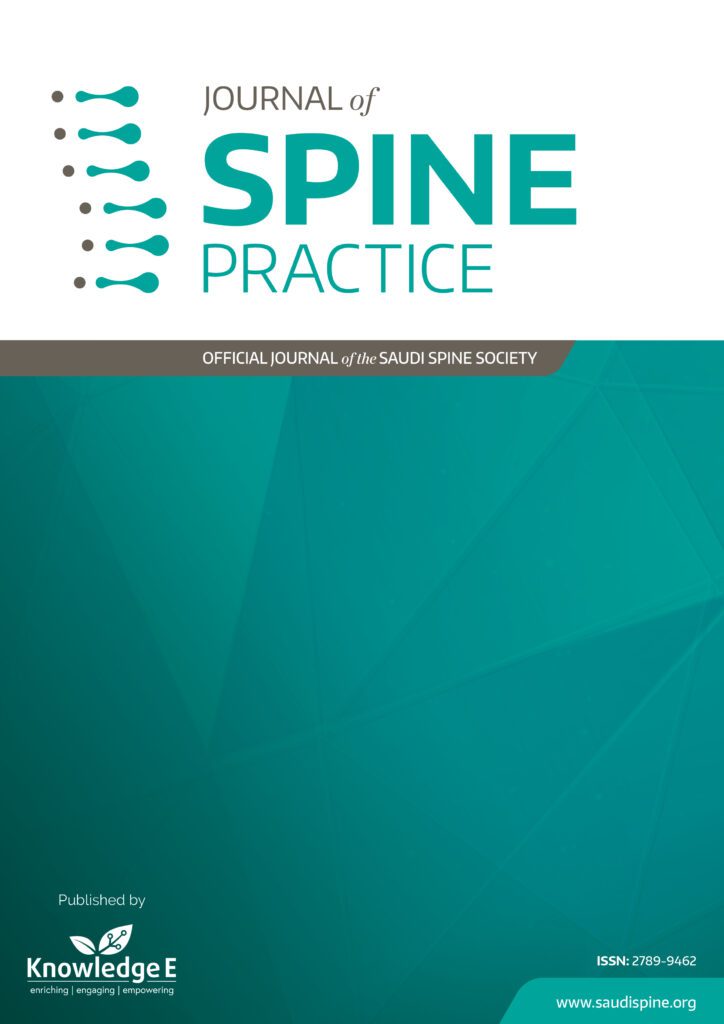
Journal of Spine Practice
ISSN: 2789-9462
Leading research in all spine subspecialties focusing on orthopaedic spine, neurosurgery, radiology, and pain management.
Lumbar Disc Herniation in Heavy Manual Workers: Conventional Microdiscectomy versus (MIS) TLIF with Unilateral Fixation
Published date: Nov 07 2021
Journal Title: Journal of Spine Practice
Issue title: Journal of Spine Practice (JSP): Volume 1, Issue 1
Pages: 32
Authors:
Abstract:
Introduction: Conventional discectomy is a common surgical method for treating lumbar disc prolapse. The situation may differ in heavy manual workers who may have more pronounced degenerative spine disease, broad-based disc herniations, and are expected to be exposed postoperatively to the same preoperative manual stress. This study was aimed at comparing the clinical outcomes in patients operated for conventional discectomy versus those operated for TLIF with unilateral spinal fixation.
Methodology: Sixty patients underwent surgeries for lumbar disc herniation. They were divided into two groups; the microscopic conventional discectomy group and the fusion (TLIF and unilateral TPF) group. They were operated between 2017 and 2019. Participants were evaluated pre- and postoperatively at 3, 6, 9, and 12 months’ intervals. Pain was scored by Visual Analogue Scale (VAS) for both lower limb and back pain. The clinical outcomes were compared using the Prolo economic and functional rating scale and a new outcome score.
Result: The two groups of patients were fairly homogeneous and comparable. Workload exposure to repetitive vibration was the biggest risk for disc prolapse and surgery (28.3%). Fusion group showed better clinical outcomes parameter including better VAS for back pain, better Prolo economic and functional rating scale, and better new clinical outcome score. In comparison, the discectomy group showed significantly higher recurrence rate and reoperation during the follow-up period. During the 12 months’ follow-up visit, when the patients were asked if, under the same circumstances, they would undergo the procedure again, 71.6% of the patients (43 patients) answered affirmatively and this reflects their satisfaction with the results of their surgeries. This satisfaction was reported in 27 patients (90%) in the fusion group and 16 patients (53.4%) in the discectomy group.
Conclusion: Heavy manual workers treated with unilateral transforaminal interbody fusion reported less pain and lower disability scores all over the follow-up period. This technique is preferable to conventional discectomy because it reduces back and leg pain while avoiding the possibility of recurrence by heavy duties and maintains stability of the lumbar spine. We proposed a new clinical outcome score to monitor the clinical outcomes of spine surgery in heavy manual workers. It relates the outcomes to the hours of work, sick leaves, and patient satisfaction with surgery. In our group of patients, it showed significant improvement in the fusion group in comparison to the discectomy group.
References: